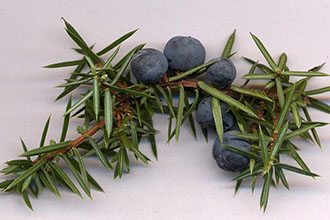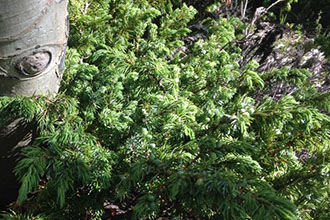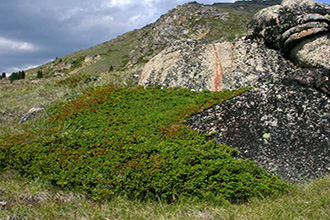Taxonomy: Kingdom - Plantae (plants). Subkingdom - Tracheobionta (vascular plants). Superdivision - Spermatophyta (seed plants). Division - Coniferophyta (conifers). Class - Pinopsida. Order - Pinales. Family - Cupressaceae (cypress). Genus - Juniperus L. Species - Juniperus communis L.
Ecology: Common juniper is possibly the most widely distributed tree in the world. Common juniper is almost completely circumpolar within the exception of a gap in the Bering Sea region. Common juniper can grow on a wide range of sites. It grows on dry, open, rocky, wooded hillsides, sand terraces, maritime escarpments, and on exposed slopes and plateaus throughout its range. Common juniper is an indicator in a number of forest and shrubland habitat types and community types. It grows as an understory dominant with ponderosa pine (Pinus ponderosa), Douglas-fir (Pseudotsuga menziesii), lodgepole pine (Pinus contorta), limber pine (P. flexilis), white fir (Abies concolor), Engelmann spruce (Picea engelmannii), white spruce (P. glauca), quaking aspen (Populus tremuloides), blue spruce (Picea pungens), whitebark pine (Pinus albicaulis), subalpine fir (A. lasiocarpa), or Rocky Mountain bristlecone pine (P. aristata).



